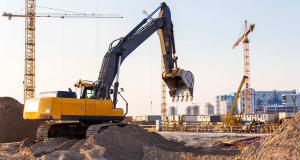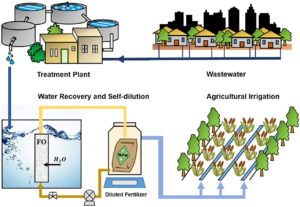Pest control is an important service that helps keep your home or business safe and healthy. It also prevents costly repairs or replacements. Contact North Las Vegas Pest Control now!
It involves removing or blocking access to food, water, and shelter from pests. This can include establishing barriers, traps, and bait stations. It can also include cultural practices such as good sanitation, removing debris and infested plants, and growing competitive plants.

A strong reputation is an important part of any business, particularly in the pest control industry. In an era where online reviews and ratings have a powerful influence on purchasing decisions, a good reputation can attract new customers and boost visibility. A strong reputation also reflects a company’s dedication to customer service and quality.
Reputation management involves monitoring and managing how a company is perceived both online and offline. It includes encouraging satisfied clients to write positive reviews and testimonials, and addressing any negative feedback promptly and effectively. It also involves identifying and targeting prospective clients with specific marketing strategies.
Many people choose to hire a professional to protect their home, business, and other property from pests. When searching for a pest control service, they often check the company’s reputation, licenses, and certifications. They may also read customer reviews and testimonials to determine whether a particular service meets their needs.
In addition, pest control companies must be mindful of the public’s health and safety. Some chemicals, such as toxins and insecticidal compounds, may be dangerous to humans and other animals. Fortunately, some fungi and bacteria have been developed that can be used to control pests without harming people or other organisms. One example is bacillus thuringiensis, which produces a toxin that kills caterpillars and other pests but does not affect people or domestic animals.
A solid reputation in the pest control industry reassures clients that the company can be trusted to safely and effectively handle their pest problems. It also shows that the company adheres to all necessary standards and regulations. For example, a pest control company should use only safe and environmentally friendly methods for eliminating pests.
Using effective marketing and management strategies, pest control companies can transform passive clients into vocal advocates. They can also improve customer satisfaction and boost their bottom line. This is especially important for hotels, which are often at risk of a bad publicity crisis due to a single negative online review. In this case, a hotel should quickly respond to the complaint by informing guests about the problem and offering alternative accommodation.
Experience
A pest control provider’s years of experience can help determine how well they are able to handle your particular infestation. A reputable provider will also have a good reputation and positive customer feedback. You should also check for licensing and certifications. Lastly, be sure to compare pricing and service packages to find the best deal.
A positive review from a client can help you attract new customers and grow your business. You should use this feedback to improve your services and increase customer satisfaction. However, you should be careful not to pester clients for a review. It is important to remember that many people are busy and may not have the time or inclination to write a review. This is why it is best to make the request for a review as easy and stress-free as possible.
The first step in controlling pests is to seal entry points. This can be done by caulking cracks and crevices, installing weather stripping on doors, and removing potential food sources. Proper waste management is another essential measure. Dispose of trash regularly and keep garbage cans covered to prevent pests from accessing the contents. In addition, trim bushes and clear standing water to minimize pest habitats.
Once a pest infestation has been identified, a treatment plan can be developed. This process involves identifying the pest, understanding its behavior and life cycle, and choosing suitable natural enemies. The natural enemies are then collected and carefully released, with attention to proper timing in the enemy and pest life cycles, to avoid off-target impacts. Integrated Pest Management (IPM) is the most effective method of controlling pests.
The IPM approach includes a combination of mechanical, biological, and chemical controls to reduce pest populations. Using multiple methods reduces the chance that pests will develop resistance to one type of control. This approach requires a thorough understanding of the pest’s biology and ecology, and a willingness to change methods based on feedback from clients. In addition, it is important to be able to identify the potential impact of a pest control method on non-target species and the environment.
Safety
Safety is a vital part of Pest Control, and the best way to protect yourself is to learn all you can about your pests and their environment. You should also read and follow product labels, use personal protective equipment (PPE) if necessary, and maintain a high level of knowledge through continuous education. This will help you to avoid pesticide-related illnesses and accidents.
Preventing pests is the most important aspect of Integrated Pest Management (IPM). Preventive measures can include physical, biological, and chemical methods. Physical controls include trap crops, screens, barriers, fences, and nets to limit access to environmental factors that support pest populations. Biological controls rely on natural enemies to injure or consume target pests. Chemical controls can include herbicides, insecticides, and other toxic substances.
Eradication is a rare goal in outdoor pest situations, but it may be necessary when the pest population becomes too large to manage with prevention or suppression alone. Eradication efforts are usually supported by federal and state agencies. For example, eradication programs for Mediterranean fruit fly and gypsy moth were developed to eliminate pests that are damaging agricultural crops and human health. In enclosed environments such as offices, school buildings, hospitality locations, and healthcare facilities, eradication may be easier to achieve than in the outdoors.
Threshold-based decision-making focuses on monitoring pest numbers to determine when action is needed. A few wasps at a picnic probably don’t warrant action, but an increase in their number over time suggests that the pest population is growing too rapidly to be controlled with other means.
A well-planned IPM program can also reduce the need for pesticides. The key is to prevent pests from getting into buildings and spreading through the interior. This can be done by keeping the area as clean as possible, reducing clutter, and caulking cracks and crevices.
When it is necessary to use pesticides, you should always choose the safest ones available and follow all label instructions carefully. You should also keep children and pets away from areas where pesticides are used. In addition, you should make sure that pesticides are not disposed of in or near waters. In such cases, you will need to obtain a National Pollutant Discharge Elimination System (NPDES) permit.
Cost
Pests are a major threat to businesses, especially those in the food and retail industries. Just one pest-related incident can tarnish a brand’s reputation and lead to fines from state and federal inspection agencies. In addition, the loss of customer trust can damage the company’s bottom line. To avoid this, it’s essential to work with a pest control professional to ensure that infestations are prevented and treated promptly.
The cost of pest control services varies according to the type of pest and treatment required. For example, termites and wood-boring beetles are difficult to eradicate and require extensive fumigation. They also ingrain themselves deeply into the wood structure of homes, making them costly to treat.
In addition to the cost of products, pest control companies may need to purchase additional materials for specific treatments. These can include a variety of insecticides, sprayers, traps, and bait stations. The price of these additional supplies is usually reflected in the final cost of service. Additionally, the use of adjuvants (i.e., ammonium sulfate or crop oil) to increase the effectiveness of a pesticide increases the cost as well.
A new pest control business may need to invest in equipment and pay for marketing efforts to build a customer base. In order to minimize startup costs, some companies choose to offer a tiered pricing structure. A basic tier offers low-cost solutions for one-off pest problems, while a mid-tier provides more comprehensive pest management at a slightly higher price point. Finally, a premium tier addresses more difficult pests and is typically the most expensive.
The location of a property is another factor that affects pest control costs. The climate and population density in the area determine which pests are prevalent. For example, rural areas may see a larger population of deer and wild animals, which can attract ticks and fleas. On the other hand, urban areas can have high populations of rodents, which can cause serious health issues.
A pest control company can help protect a residential or commercial building from invasive insects and pests with a customized plan. This plan starts with a thorough inspection of the property to identify the pests and their habitats. The inspector then develops a treatment strategy that includes targeted application of pesticides or baits. In many cases, monthly follow-up visits are recommended to prevent pests from returning and establishing a recurring problem.








